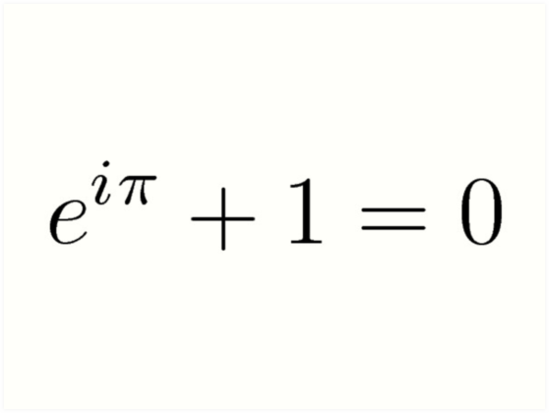- Published on
If it's raining then einstein is playing football, or is he not?
- Authors

- Name
- AbdulHafeez AbdulRaheem
If it's raining then einstein is playing football, or is he not?
A look at statements and conditional statements in mathematical proofs.
Following my last post where I explained how I would be writing about mathematics and delving into the world of numbers more. Starting with proof-writing and reading as it is well known as a must-know concept to understand the language of mathematics.
In this article, I would explain briefly and give a summary of the most important part of proof-writing and reading in mathematics, which is statements. understanding a statement gives room to develop a conjecture before any proof is actually written.
 Some Random Google Image
Some Random Google Image
So… What is a statement?
A statement is a declarative sentence that is either true or false but not both.
What this means is a statement needs to be assertive in order to prove it true or false. An example would be:
There are integers such that the statement x + y = 7. If we substitute x for 3 and y for 4, we can prove that the statement is true likewise if x is 1 and y is 6.
Another example would be: “This umbrella is red” — this sentence is a valid statement because it's asserting that the umbrella’s colour is red.
An example of an invalid statement would be: “Is it raining” —because it is a question and it isn't asserting anything.
Deciding if a statement is true or false boils down to investigating and exploring how true this statement can go with different scenarios. This is known as a conjecture, It's a statement that appears to always be true no matter which set of example to test it against or what scenario it's being tested against, this establishes that the statement is true but it doesn't have concrete mathematical proof yet.
There are different techniques to check if a statement truly satisfies being a conjecture. They are:
- Example: Constructing appropriate examples is very important. Exploration requires a lot of examples to gather a lot of information to provide evidence with the statement is true likewise finding evidence the statement is false, is called a counterexample. Consider the conjecture that: if x and y are odd integers, then x + y is an even integer. If we input 3 for x and 7 for y which is 10 and 5 + 11 = 16 and find that when we add two odd integers, the sum is an even integer, However it is not possible to test every pair of odd integers, and so we assume the conjecture appears to be true, then we proceed to prove the statement mathematically.
- Use of prior knowledge: Considering a conjecture
sin(2x) = 2sinxfor all real numbers. Using prior knowledge of trigonometry identities called “double angle identities”. Recallsin(2x) = 2sin(x)cos(x). This proves the conjecture to be false. - Cooperating and Brainstorming: Sharing ideas with other mathematicians and thinking out loud often generate new ideas.
Conditional Statement
Generally, they are statements that require a hypothesis to be satisfied before a conclusion is reached.
P → Q
this is the symbol that represents the statement “If P then Q”, P is referred to as the hypothesis and Q the conclusion.
Examining the scenarios that could happen in the condition P → Q using a truth table.
There is an absurd condition on the table where P is false and Q is true. if we examine the following statement — “If it’s raining, then einstein is playing football”, What happens if it's not raining then P is false but einstein is playing football therefore Q is true. The conditional statement only captures what happens when it's raining.
Another example of a conditional statement is:
if x is a positive real number then x² +8x is a positive real number. Investigating this statement knowing what a real number is important. A real number is a set of numbers that consist of rational numbers and irrational numbers, Rational numbers being a number that can be represented in form of a fraction Eg. 2, 1, 1/2, 3/4. An irrational number cannot be represented in the form of a fraction Eg. e, π.
π seems absurd being irrational but is 22/7 is not accurately equal to the value of π pi, thus being an irrational number.
Investigating :-
when x =1; therefore x² + 8x = 9
when x = 2; therefore x² + 8x = 20
when x = 3; therefore x² + 8x = 33
We obverse that after some examples it turns out the equation x² + 8x would return a positive real number as long as x is a positive real number. Thus we say this conjecture is true, which further leads to the proving of the statement.
Conclusion
Understanding a statement is very key to proving if a statement is actually true or false, Investigating a statement to develop a conjecture is a very important concept to understand how we write and read proves in mathematics. It was very funny learning this over the two weeks I started learning (Phew time flies). See y’all next two weeks.
“Nothing takes place in the world whose meaning is not that of some maximum or minimum.” … Euler.